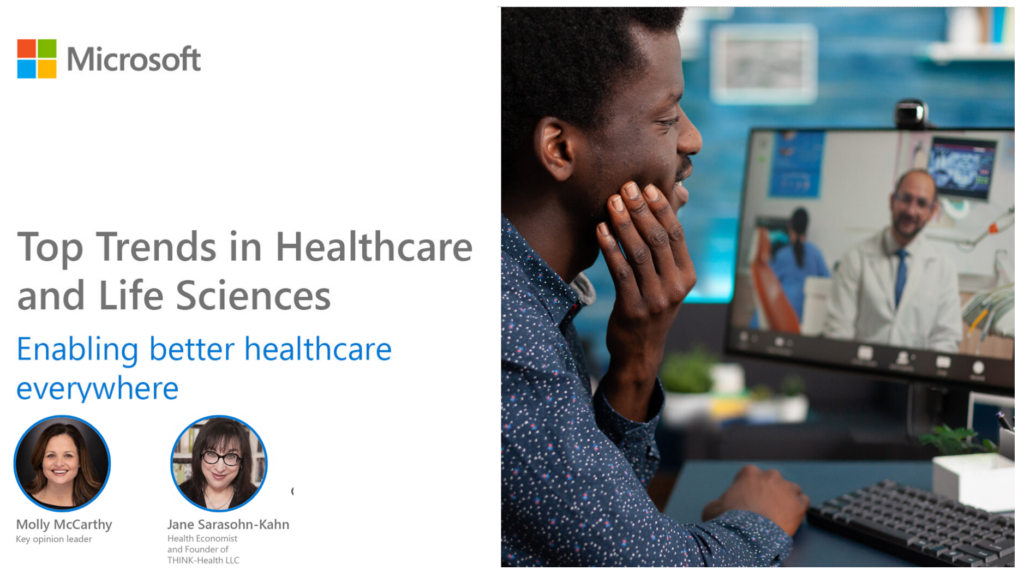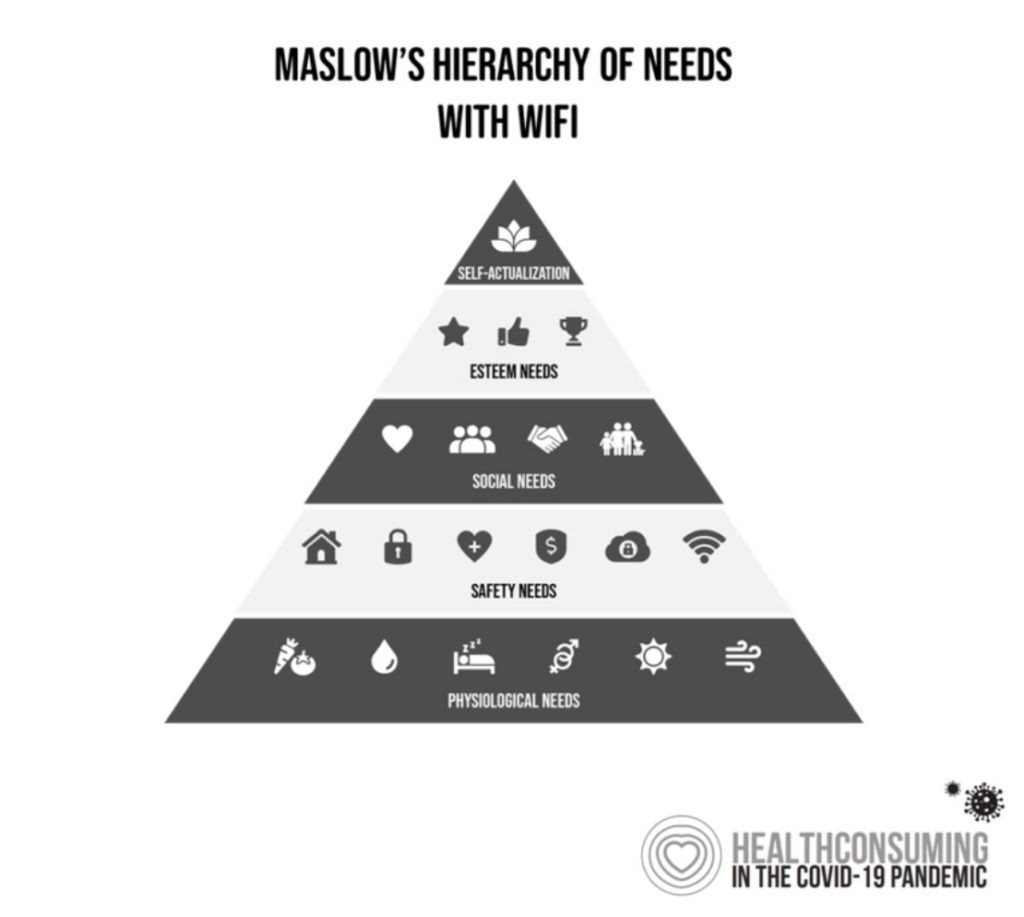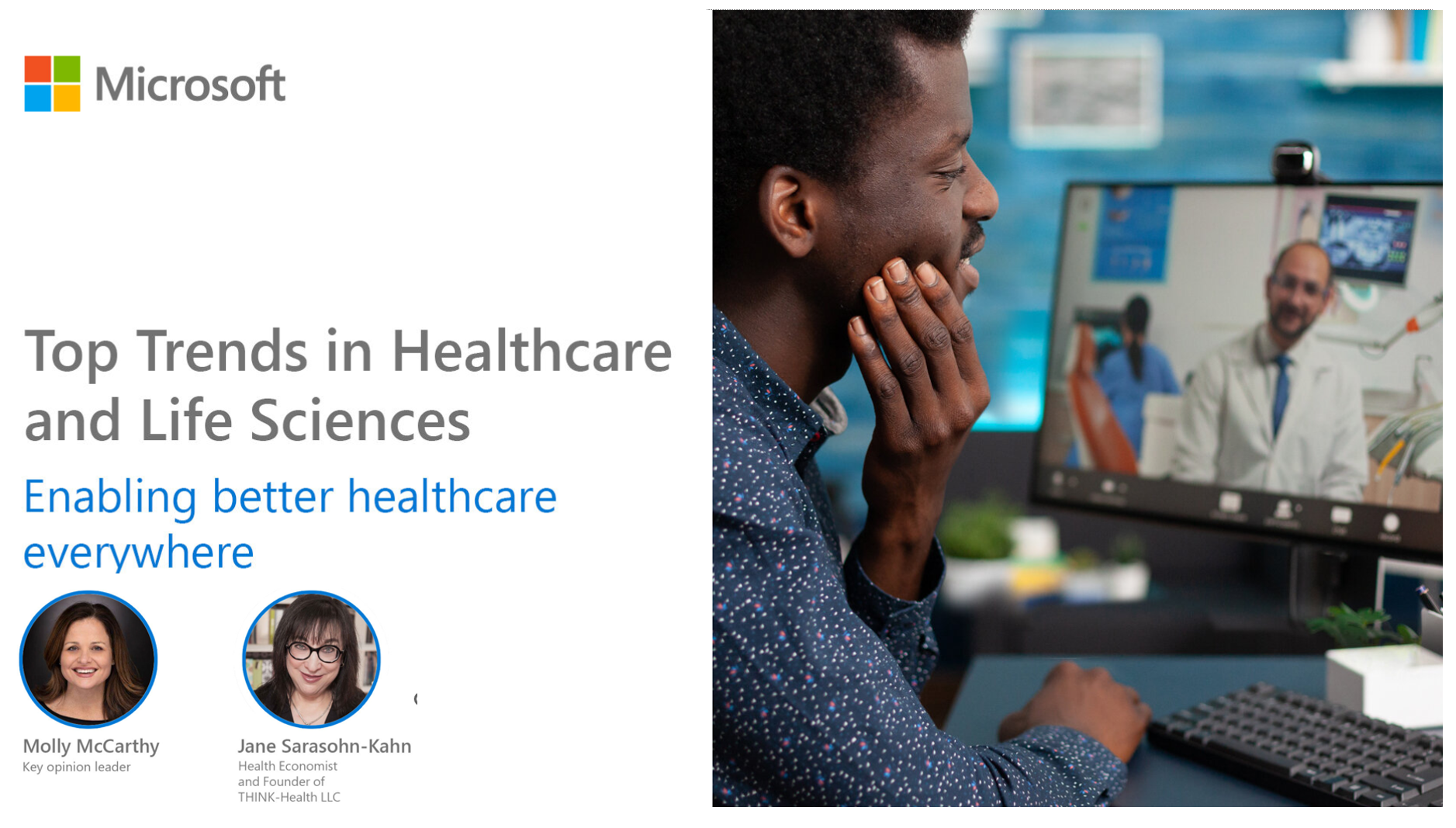I am grateful to have been given the opportunity to brainstorm omnichannel health care for people to enable better health care for all, anywhere and everywhere, with Team Microsoft. Key opinion leader Molly McCarthy and I covered a lot of ground in this webcast conversation as part of Microsoft’s series of three “Expert perspectives on trends driving change in healthcare.”

Molly and I covered a lot of ground here, starting with the key forces shaping and accelerating virtual care across the continuum. While these were in place before the COVID-19 pandemic, the public health crisis turbocharged telehealth and its many flavors from real-time clinical encounters to HIPAA-compliant secure messaging “asynchronously” as well as plain-old text messaging which can be a preferred communications channel for many patients — especially those who may lake access to predictable, quality broadband connectivity.

That led us to a discussion on the determinants of health and basic human needs — now with Wi-Fi akin to clean air, clean water, food, and shelter for survival. We learned this lesson during the pandemic quite clearly — connectivity as a social determinant of health.
Molly and I then segued into how the health system incumbent players — hospitals, plans, clinicians, and life science companies — can (and should be) part of the telehealth ecosystem and solutions to deliver care, everywhere.
In addition to my discussion with Molly, you should also listen to two insightful colleagues’ conversations in the series, with:
- Dr. Bonnie Clipper, Founder and CEO of Innovation Advantage, sharing learnings on high-tech and high-touch in nursing; and,
- Gil Bashe, Chair of Global Health and Purpose at FINN Partners, discussing the growing importance of connected data in health care – think AI, machine learning, and the criticality of breaking down siloes of information.
Thanks to Microsoft for its leadership in enabling better healthcare, everywhere.





 Thank you FeedSpot for
Thank you FeedSpot for